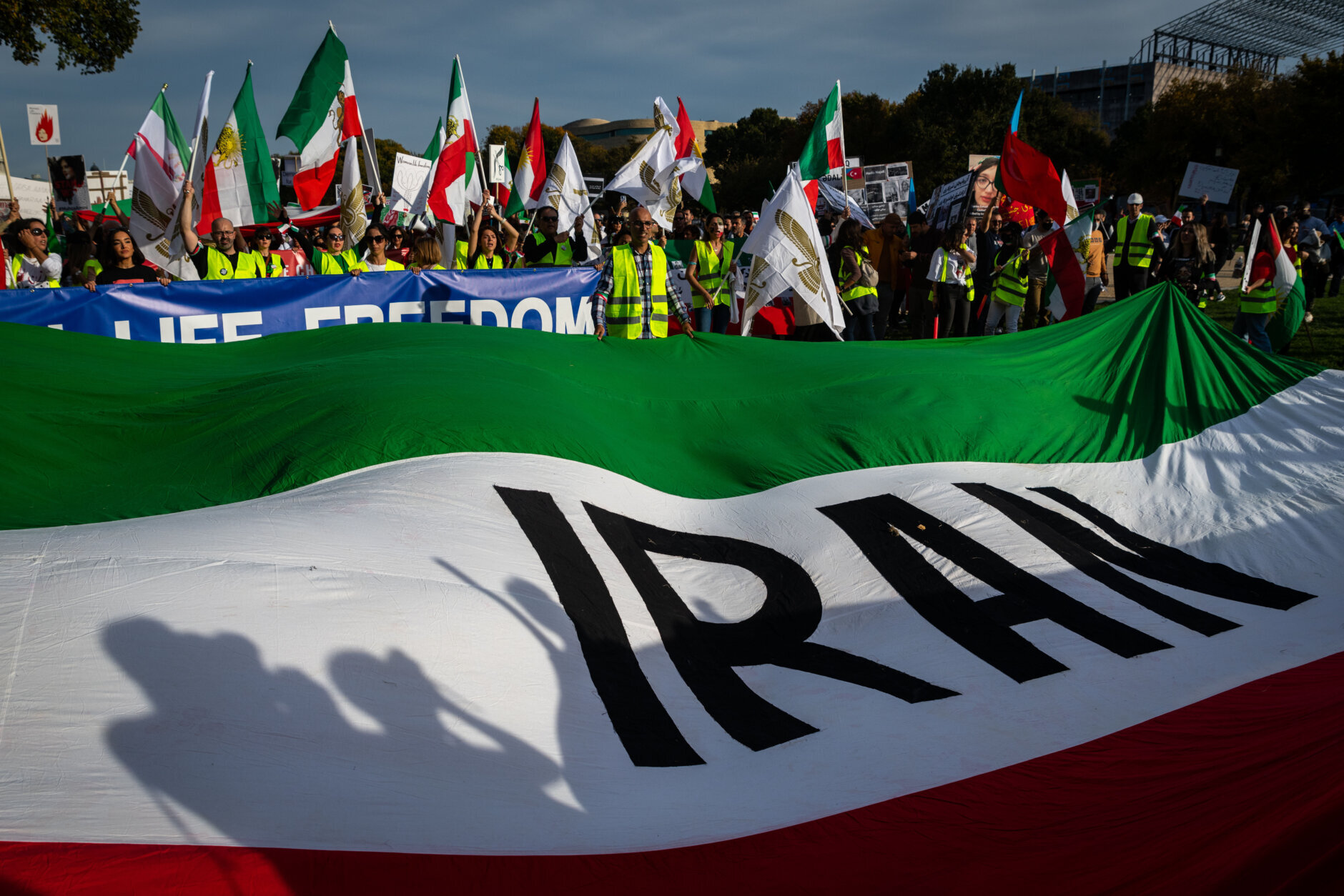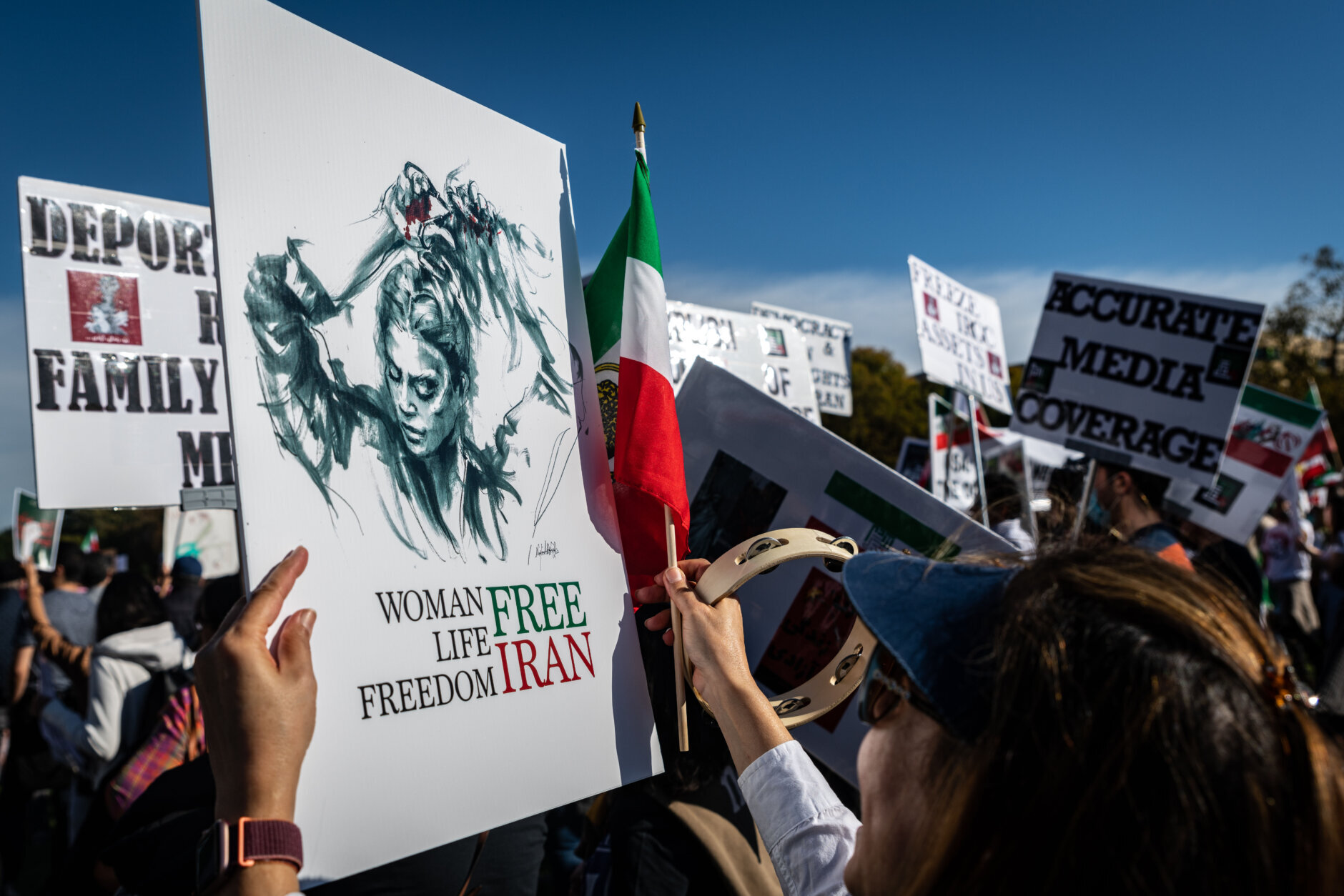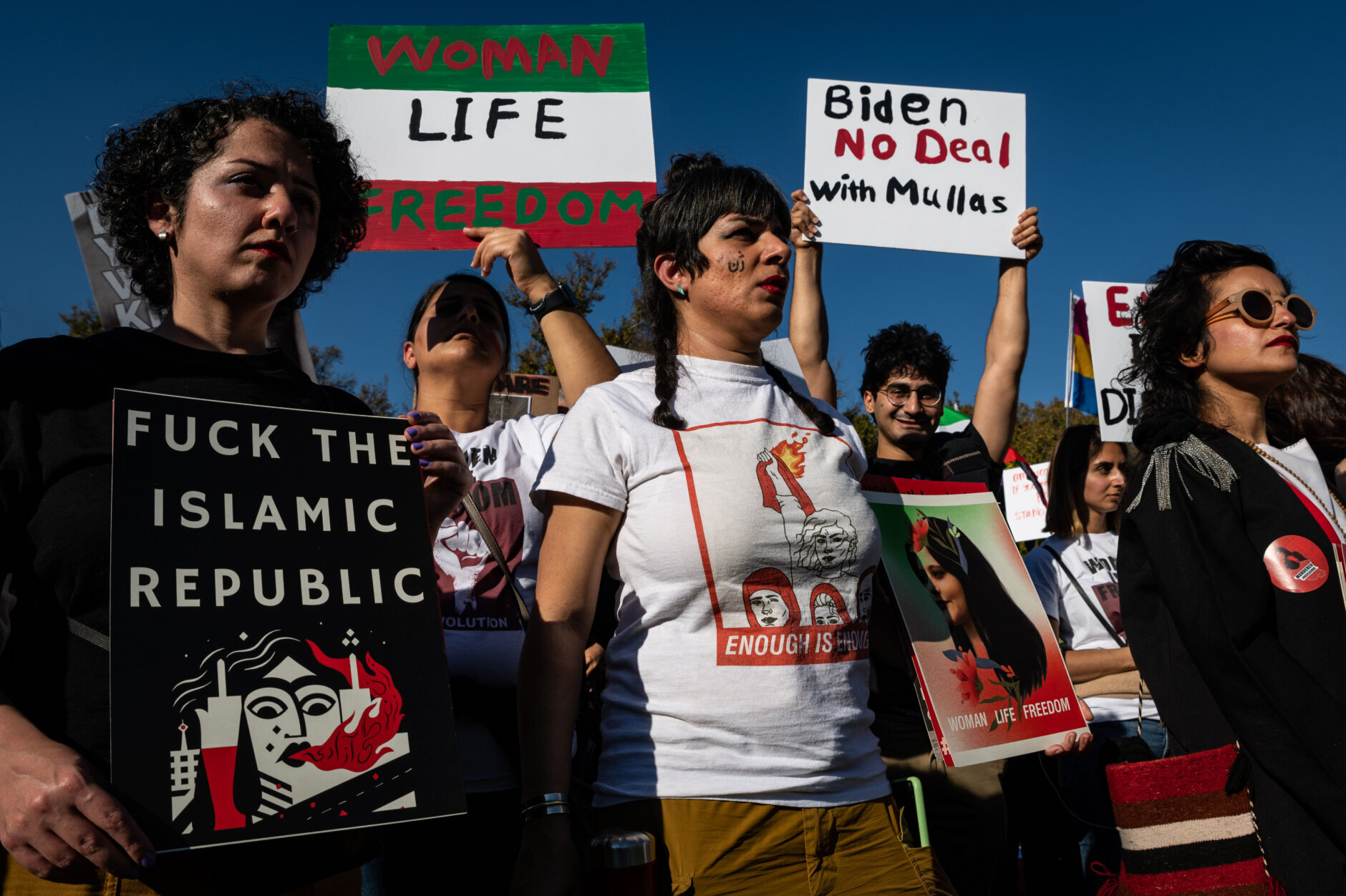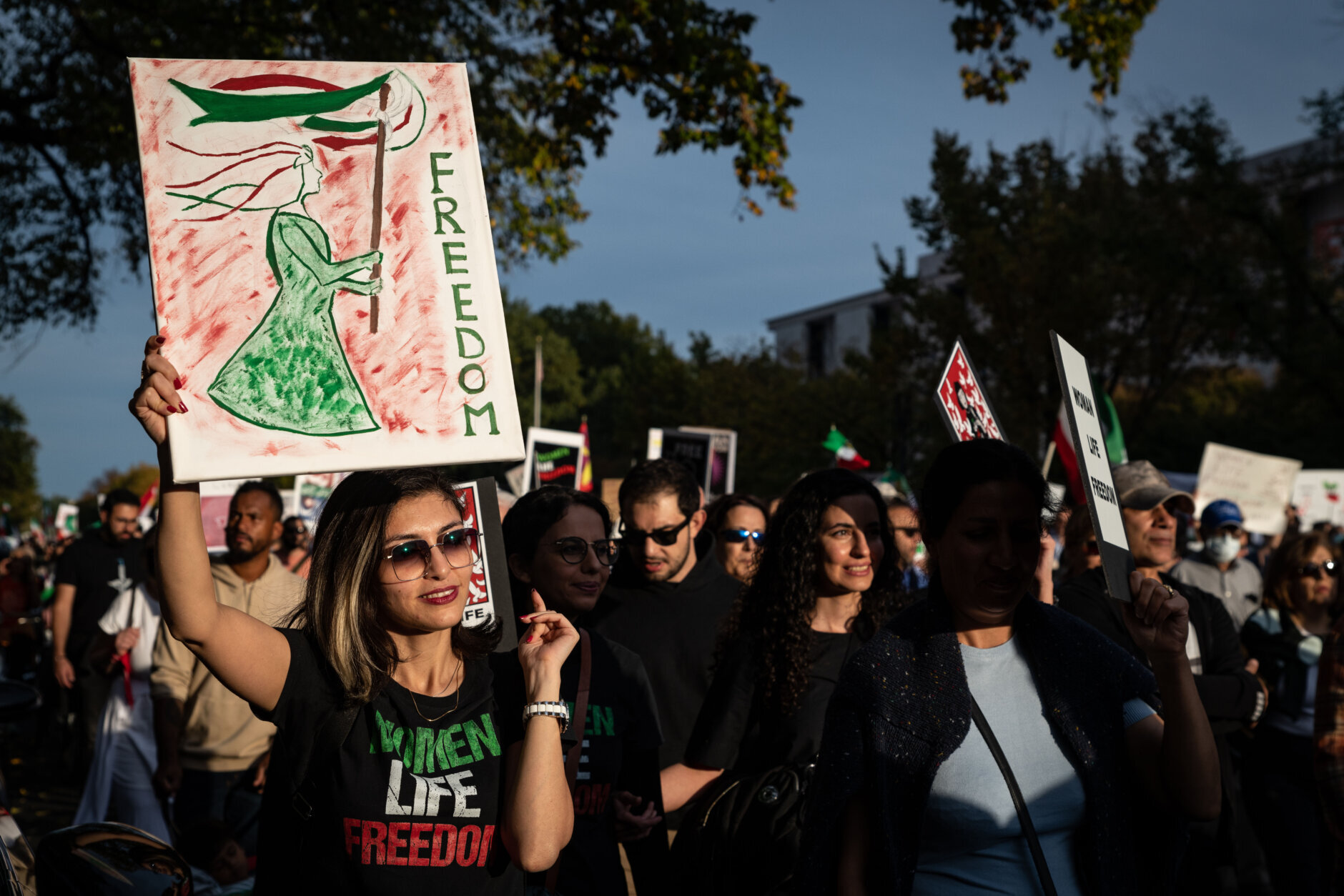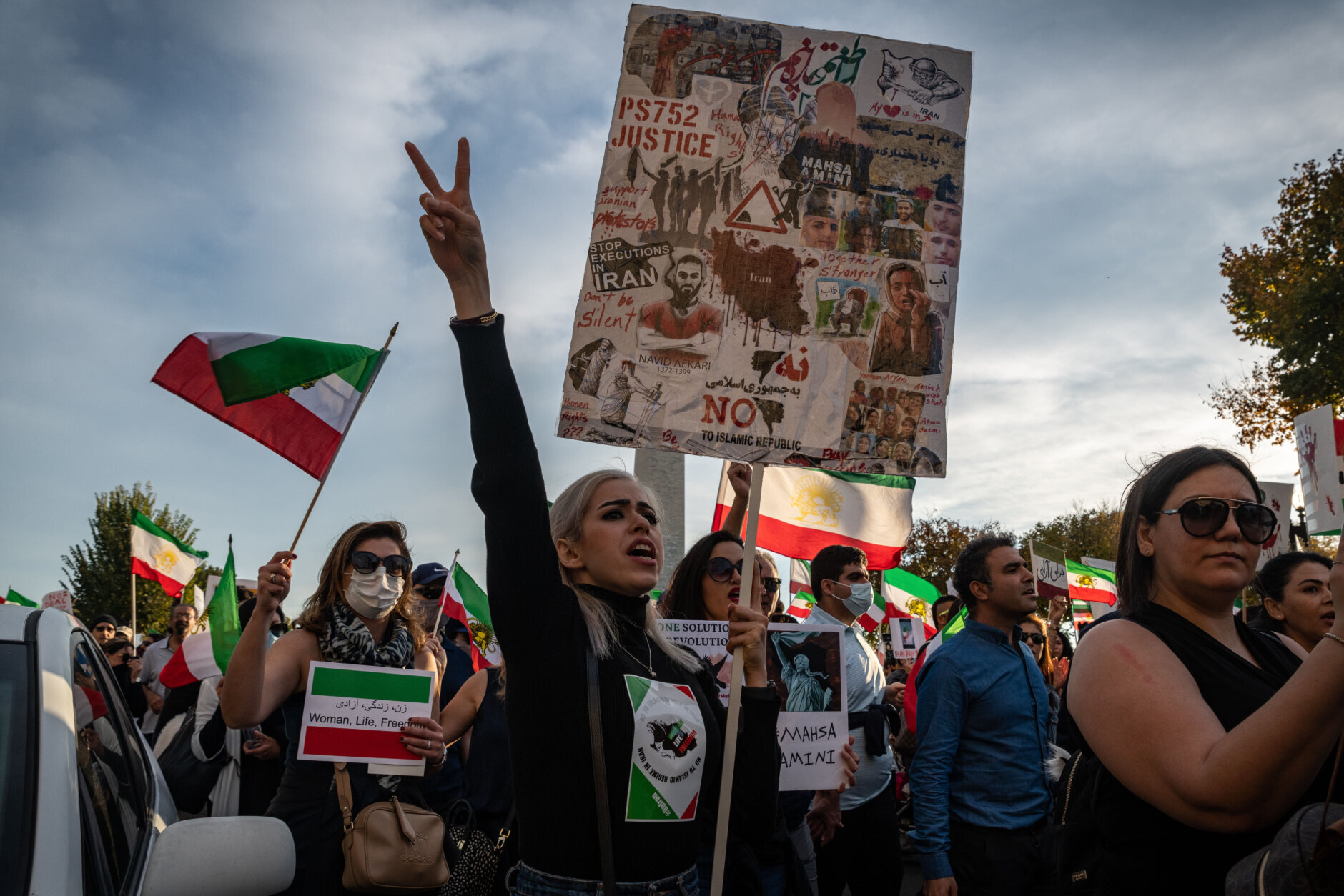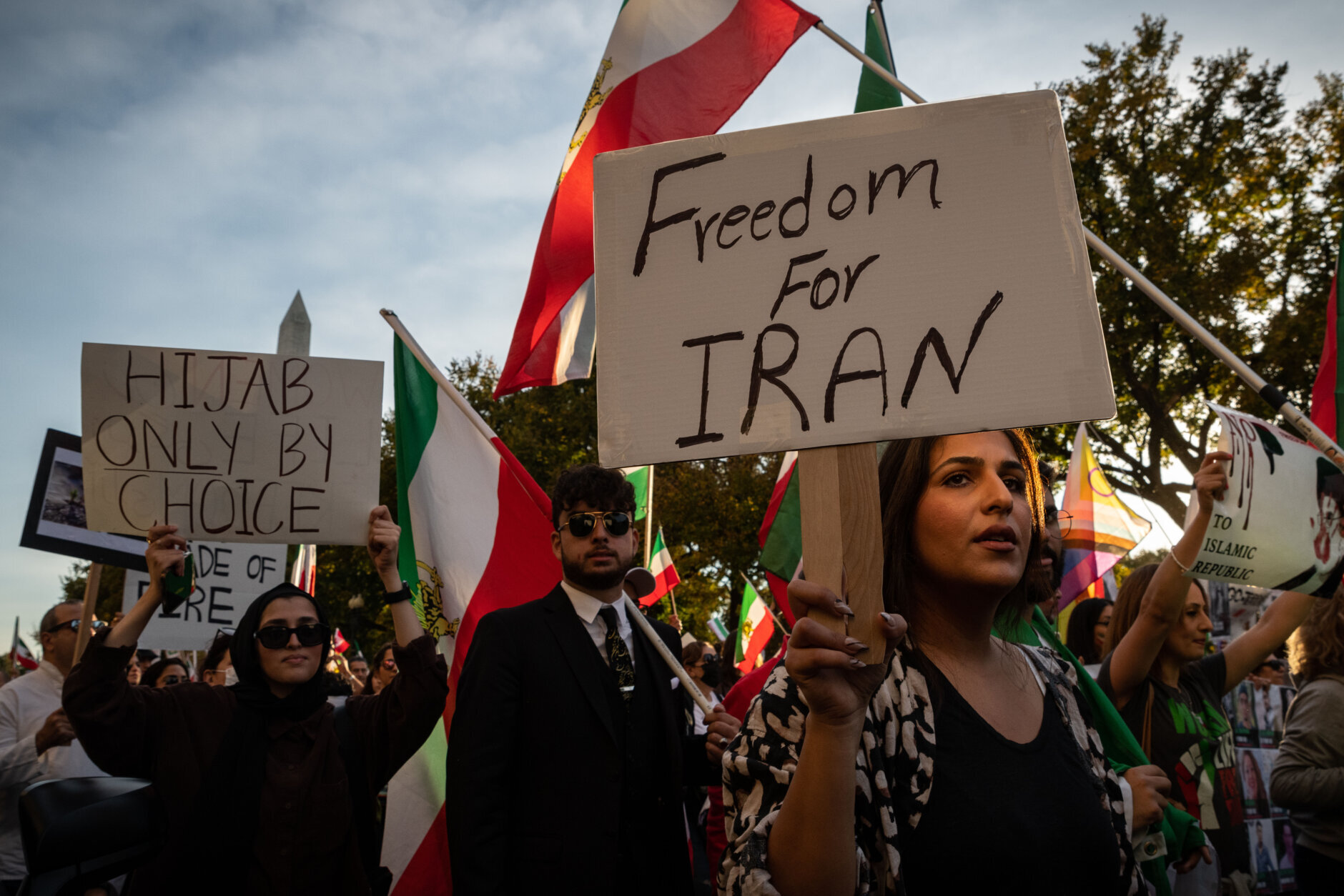This video is no longer available.
For the fifth weekend in a row, the streets of the nation’s capital echoed with a simple plea from Iranian Americans: “Woman, life, freedom.”
Thousands marched from the National Mall to the White House on Saturday evening, part of an international wave of protests following the death of 22-year-old Mahsa Amini in the custody of Iran’s morality police. Iranians traveled to D.C. from across the country — and even from Canada — for Saturday’s march, determined to capture global attention amid a deadly police crackdown that human rights groups estimate has claimed more than 200 lives across Iran.
“We, the Iranian diaspora community, know that the best way to show solidarity for our oppressed compatriots and the freedom of our beloved country is to bring the cries of our compatriots inside Iran to the ears of the world,” read a flyer handed out to passers-by along the National Mall.
For hours in the evening light, a sea of red, white and green, the Iranian tricolor, washed over Northwest D.C.’s Constitution Avenue and 17th Street during a slow procession to the White House. Like in previous weeks, protesters hoisted oft elaborate artwork featuring Mahsa Amini, memorializing the young Iranian woman whose death sparked mass demonstrations that have been growing since September.
Carried within banners big enough to cover the span of the street from edge to edge were photographs of demonstrators — many of them women — who marchers say were killed or maimed by Iranian security forces. One image showed an Iranian man’s back peppered with dozens of round bruises from rubber bullets.
A prominent chant, reverberating between the Smithsonian museums along the Mall, was “from D.C. to Tehran, change the regime in Iran.” Among countless signs relaying calls for women’s rights and a democratic future for Iran was one that read “you can’t burn women made of fire.”
At multiple points along the road to the White House, thousands paused their chanting to sing “Baraye,” an Iranian protest anthem whose lyrics stitch together social media posts from protesters explaining their motivation for rising up against the regime. Baraye quickly went viral after its inception by Iranian musician Shervin Hajipour, and has been filmed blaring out of car windows and echoing between high-rises in the Iranian capital of Tehran.
“For my sister, your sister, our sisters,” reads one line, translated to English from Farsi. Another: “For yearning for a normal life.”
Saturday’s march came hours after tens of thousands of Iranians and their allies marched through central Berlin, in what was likely one of the largest Iranian diaspora-led actions since the Mahsa Amini protests began. Thousands also took to the streets in Los Angeles, home to the country’s largest population of Iranian Americans.
All three marches on Saturday, D.C.’s included, shared a common, thunderous call: “Azadi” — Farsi for “freedom.”
Editor’s note: Some images below contain strong language.

